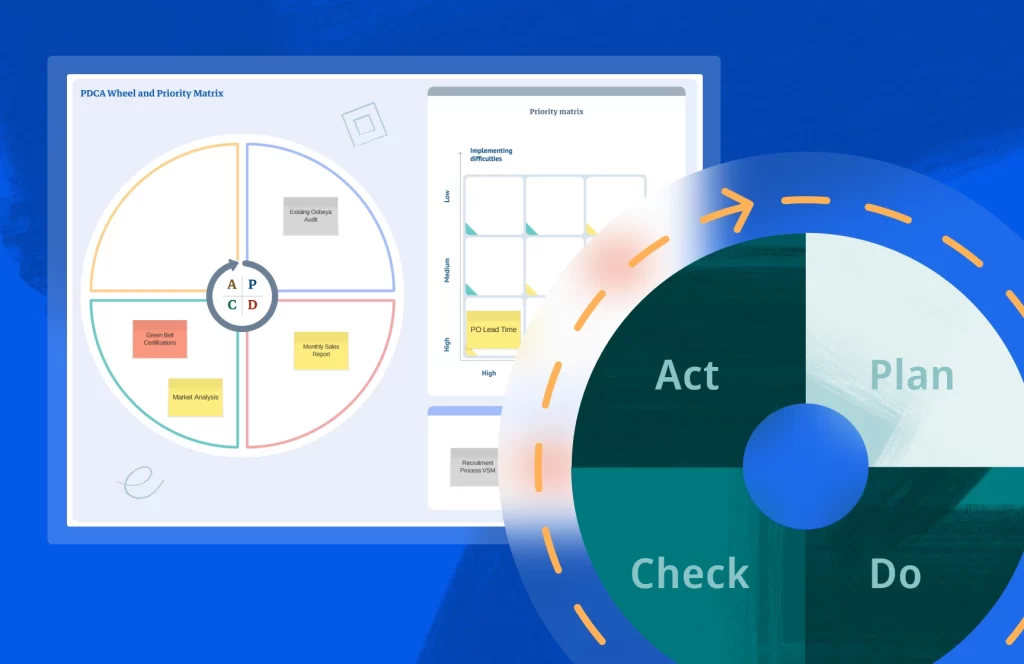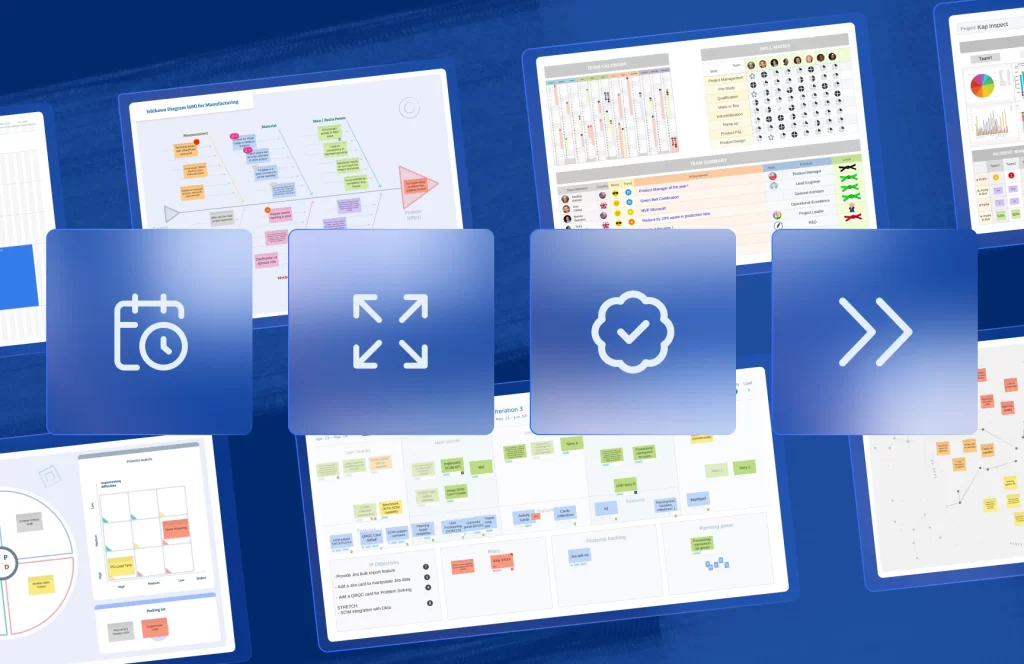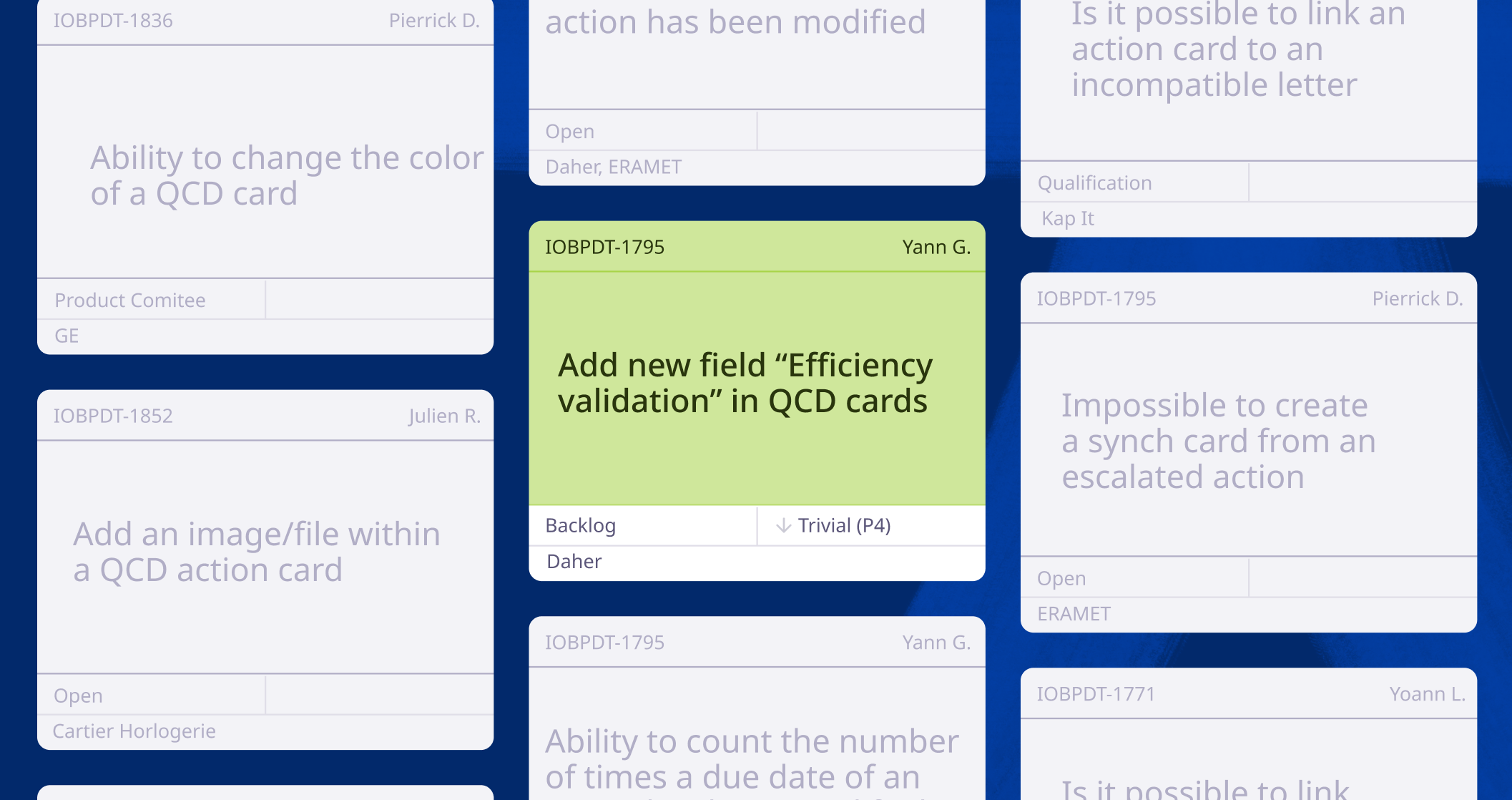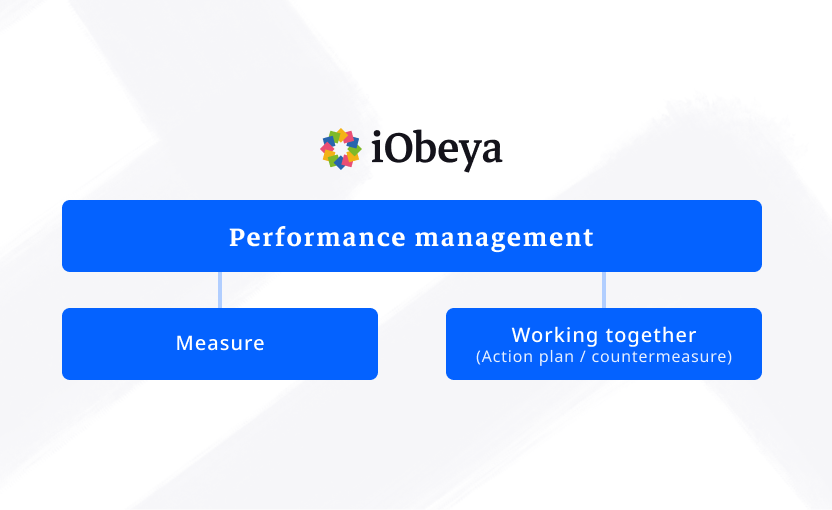Hey, let’s start your
iObeya journey!
Kaizen is a Japanese term that translates to “continuous improvement.” It is a fundamental element of the Lean methodology, originating within Toyota in Japan. While Kaizen is predominantly used in the Manufacturing industry, it is also applicable to various other sectors, promoting continuous improvement within an organization.
Kaizen gained popularity in Japan after World War II, largely due to the work of W. Edwards Deming, an American statistician who contributed to the recovery of Japanese industry. The concept of Kaizen is built on the notion that small, regular, and incremental changes lead to significant improvements over the long term. We have identified 4 key principles of Kaizen.
"Kaizen Attitude"
Continuous improvement is primarily a matter of culture and mindset. As Peter Drucker aptly puts it, “culture eats strategy for breakfast.” In other words, all the methods in the world will not yield significant results without the collective willingness to progress.
But where does the need for improvement stem from? The life of businesses, much like that of individuals, is dotted with problems: big or small, urgent or not, sometimes interconnected by cause-and-effect relationships, other times isolated
The “Kaizen attitude” lies in the determination of all members of the company – and I emphasize all, including middle and top management – to challenge the current state of affairs and seek solutions to problems instead of explaining why they are difficult to address. This collective willingness is, by definition, ongoing, as everything is in perpetual change and we must continuously adapt.
The “Kaizen” mindset requires executives to be gentle with people but tough on problems, instilling a genuine trust in their teams: there’s no need to be an official expert or a high-ranking individual to contribute to the daily improvement of the company. It’s preferable to combine 10 good ideas and test them rapidly instead of waiting for a single brilliant idea.
In this sense, the “Kaizen” approach of making small increments distinguishes itself from “Kaikaku,” which involves breakthrough improvements based on more radical technological or business model changes.
PDCA Cycle (Plan, Do, Check, Act)

This incremental approach to change has been conceptualized by the PDCA Cycle (Plan, Do, Check, Act), also known as the Deming Cycle or continuous improvement cycle, and it generally sets the framework for Kaizen. Teams practicing Kaizen follow this cycle to plan changes, implement them, verify results, and apply corrective actions if needed.
The PDCA cycle was developed by William Edwards Deming, mentioned earlier. Here are the different stages of the PDCA cycle:
Stage 1: Plan – This stage involves determining the objectives as well as identifying problems and areas for improvement. At the end of this stage, the team is able to present a SMART plan (Specific, Measurable, Achievable, Realistic, Time-bound) for implementing the identified improvements.
Stage 2: Do – This is the phase of implementing the plan outlined in Stage 1. It’s quite common for Kaizen teams to experiment and conduct trials to test new approaches.
Stage 3: Check – This stage involves evaluating the results achieved after the plan has been implemented. It’s also the point at which the team compares the results with the objectives set during the initial phase.
Stage 4: Act – If the results align with the defined objectives, the team adopts the practices as new standards. However, if discrepancies are identified, stakeholders analyze the reasons and make necessary adjustments to the initial plan in order to achieve the originally defined objectives.
And so on, in other words, the PDCA cycle repeats continuously; it’s referred to as a cyclic process that promotes continuous and iterative improvement.
The PDCA cycle is widely used in quality control, lean management, and project management. This methodology allows organizations to adapt to changes, systematically solve problems, and achieve increasingly higher levels of performance.
Systemization and Systemic Approach
Involving all employees in continuous improvement inevitably generates an incessant flow of various problems. Management plays a crucial role in creating the necessary conditions for this flow, like any other flow within the company, to “flow” smoothly.
In this regard, the systemization of the overall problem-solving process is crucial to:
- Ensure the sustainability of the continuous improvement approach
- Maintain team motivation
-
Yield tangible results
As you can see, continuous improvement is an enterprise marathon, not the sprint of a small group of experts.
In this same problem-solving process, management is also tasked with the delicate balance between local and global optimization. Since the Lean approach is inherently systemic, every manager should prioritize “global” solutions. However, these solutions often take time and risk frustrating frontline teams. The journey toward global optimum is therefore never linear and must consider employee motivation to continue, as well as collective learning gained along the way.
The Necessity of Continuous Learning
Imagine a company with ten thousand employees, each supported in implementing at least one idea per year… That would result in ten thousand small improvements per year for the entire company. If teams maintain this pace for ten years, we’d reach one hundred thousand improvements. These volumes are becoming significant.
Ultimately, continuous improvement generates remarkable knowledge. The challenge for the company is to capitalize on this knowledge to avoid repeating past mistakes. In other words, a significant portion of the ten thousand ideas mentioned above shouldn’t merely be “band-aids” to patch unresolved issues.
Management is tasked with putting teams into action, but it must also ensure they don’t “empty the sea with a spoon.” Efficiency is thus a key factor, achieved through knowledge sharing, which can take different forms like training, creating and implementing highly operational visual standards, and utilizing internal circles or communities.
All these activities aim toward one grand objective: building a learning organization, which, from a Lean perspective, represents the most critical competitive advantage.
Implementing Continuous Improvement for Operational Excellence Enterprise-Wide
Steering a system of continuous improvement across the entire company is a complex task. Concrete results should benefit everyone within a sustainable long-term approach, facilitated by collective learning.
For operational existence, all of this must materialize somewhere to be animated and monitored. This is where continuous improvement activities find their place in visual management boards. This connection is natural and thrives within a multi-level, interconnected system management visual mode, rather than isolated boards.
Interconnecting boards isn’t impossible, but it’s certainly time-consuming and tedious when visual management is in paper format: daily spreadsheet updates for data history, printing graphs and documents, data synchronization issues, reinventing the wheel, etc. All these obstacles weigh down the process, jeopardizing its sustainability and longevity.
Thus, digital technology has entered the realm of visual management and Lean principles: to enable your organization to minimize ancillary tasks related to continuous improvement and focus on the essentials – problem-solving and collective learning.
For over a decade, iObeya has supported organizations in implementing their continuous improvement processes, relying on digital visual management systems constructed with teams and management.







